From Pyramids to Modern Cities: An Exploration of the Grand Egyptian Museum
This comprehensive article is a journey through time, exploring the heart of Egypt’s history as displayed in the Grand Egyptian Museum in Giza. We delve into frequently asked questions that reveal the significance of this institution and its exhibits in our understanding of the Ancient Egyptian civilization.
What makes the Grand Egyptian Museum in Giza unique?
The Grand Egyptian Museum is not just another museum; it’s a historic monument in its own right. Located in the shadows of the Pyramids of Giza, it holds the title of the world’s largest museum dedicated to a single civilization.
The museum’s architecture is a blend of the ancient and the modern, reminiscent of the transition from the Pharaonic age to the modern age. The panoramic glass facade offers an uninterrupted view of the pyramids, connecting the museum’s contents to their historical context.
Housing over 100,000 artifacts, the Grand Egyptian Museum serves as a comprehensive repository of Egypt’s rich history. Notably, it contains the complete Tutankhamun collection, with many pieces displayed for the first time.
The museum’s setup is designed for a chronological walkthrough. It starts from the pre-dynastic era, continuing through the Old, Middle, and New Kingdoms, and finally to the Greco-Roman period.
Educational programs and workshops are another facet of the museum’s offerings. These initiatives aim to engage visitors of all ages, offering them a closer look at the Egyptian culture, arts, and sciences.
The Grand Egyptian Museum is also home to conservation labs, a children’s museum, a conference center, and gardens replicating the landscape of ancient Egypt. These features together make it a unique cultural and educational hub.
In terms of accessibility, the museum excels by providing facilities for people with disabilities, including guided tours in sign language and Braille labels.
Preserving the past while embracing the future, the Grand Egyptian Museum stands as a testament to Egypt’s enduring legacy. It presents not just the history of a civilization but also reflects Egypt’s ongoing evolution from the age of pyramids to modern cities.
How does the Grand Egyptian Museum enhance our understanding of the Pyramids of Giza?
The Grand Egyptian Museum serves as a portal to ancient Egypt, facilitating a deeper understanding of the Pyramids of Giza. Its proximity to the pyramids, its vast collection of artifacts, and its innovative exhibits all contribute to this unique learning experience.
Artifacts from the Pyramid Age, including tools, models, and inscriptions, provide insights into the construction techniques of the pyramids. These exhibits help visitors visualize the complexity of the task and the advanced knowledge the ancient Egyptians possessed.
The museum houses a vast collection of artifacts unearthed from the Giza plateau, including those from workers’ tombs. These artifacts humanize the pyramids, offering insights into the lives of the people who built these grand structures.
Several exhibits in the museum focus on the religious significance of the pyramids. These include models of solar boats, statues of gods, and funerary texts, which provide context to the belief systems and the afterlife rituals associated with the pyramids.
Through the Tutankhamun collection, the museum offers a glimpse into royal burial practices. Although Tutankhamun’s tomb was in the Valley of the Kings rather than in a Giza pyramid, the funerary objects reflect the broader traditions of ancient Egyptian royal burials.
The Grand Egyptian Museum’s innovative use of technology enhances the learning experience. Interactive displays, 3D models, and virtual reality experiences allow visitors to immerse themselves in the world of the pyramids.
Lastly, the Grand Egyptian Museum’s educational programs provide additional insights into the pyramid age. Lectures, workshops, and guided tours delve into topics ranging from pyramid construction to the religious beliefs of the pyramid builders.
Through its exhibits, resources, and programs, the Grand Egyptian Museum offers a holistic understanding of the Pyramids of Giza, bridging the gap between the ancient world and the modern viewer.
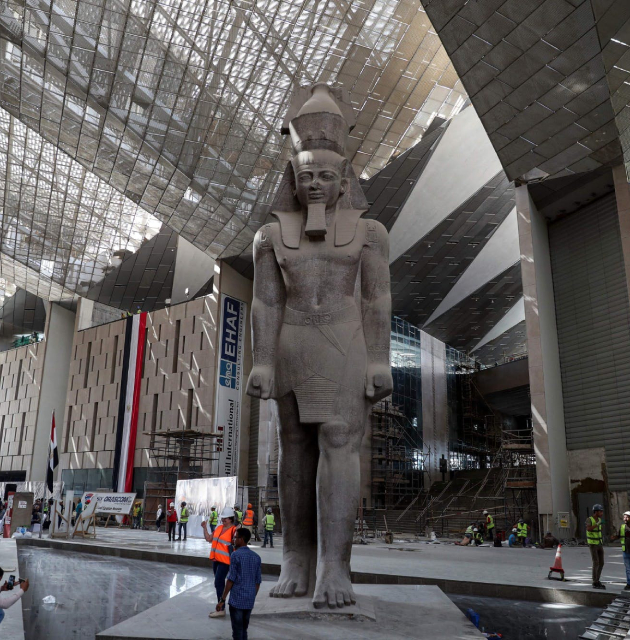
What role does the Grand Egyptian Museum play in the preservation and conservation of Egyptian artifacts?
The Grand Egyptian Museum plays a crucial role in the preservation and conservation of Egypt’s rich cultural heritage. As the world’s largest archaeological museum, it provides a dedicated space to safeguard, study, and display Egyptian artifacts.
The museum is equipped with state-of-the-art conservation labs, where skilled professionals work meticulously to preserve and restore artifacts. These labs are often referred to as the heart of the museum due to their essential role in safeguarding Egypt’s priceless treasures.
Upon arrival, each artifact undergoes thorough examination and documentation, a process involving photography, X-rays, and other non-invasive techniques. This initial phase helps to assess the object’s condition and determine the necessary conservation measures.
Conservation techniques vary greatly depending on the artifact’s material and condition. The process can involve cleaning, consolidation, or even reassembly of fragmented pieces. While these tasks are delicate and time-consuming, they are crucial for prolonging the life of the artifacts and ensuring their accessibility for future generations.
The Grand Egyptian Museum not only preserves individual artifacts but also respects their original context. This approach is evident in the layout of the museum’s exhibits, which are arranged chronologically to reflect the progression of Egyptian civilization.
Furthermore, the Grand Egyptian Museum has committed to a proactive approach to preservation. This involves monitoring the artifacts’ conditions regularly, managing the museum’s environmental conditions, and training staff in the latest conservation techniques.
The museum also takes steps to educate the public about the importance of preservation. Through its exhibits, it showcases the conservation process and the challenges involved, thus raising awareness about the value of cultural heritage and the need to protect it.
The Grand Egyptian Museum’s preservation efforts extend beyond its walls. It collaborates with other institutions globally on research, training, and conservation projects, contributing to a broader understanding of Egypt’s history.
In summary, the Grand Egyptian Museum is much more than a display of historical artifacts. It is a vital institution committed to the ongoing preservation and conservation of Egypt’s cultural treasures, ensuring their survival for future generations.
How does the design and architecture of the Grand Egyptian Museum reflect the transition from ancient pyramids to modern cities?
The design and architecture of the Grand Egyptian Museum stand as a testament to Egypt’s historical journey from the era of ancient pyramids to modern cities. Its design is a seamless blend of traditional and contemporary styles, echoing the evolution of Egyptian civilization itself.
Located near the Giza Plateau, the museum’s exterior design is inspired by the iconic pyramids. The translucent stone facade and triangular forms evoke the majesty of the nearby pyramids, creating a visual dialogue between the museum and the ancient monuments.
Yet, while the exterior draws from Egypt’s ancient past, the interior reveals a modern and forward-thinking design. The open, airy spaces, flooded with natural light, feature clean lines and minimalist aesthetics characteristic of modern architecture.
The museum’s layout embodies the transition from ancient to modern times. Visitors move through the museum in a chronological journey, starting with the earliest periods of Egyptian civilization and culminating in the Greco-Roman period, symbolically tracing Egypt’s evolution through time.
Technological advancements are an integral part of the museum’s design. Modern lighting, interactive displays, virtual reality experiences, and other digital innovations contrast with the ancient artifacts on display, further highlighting the blend of old and new.
The inclusion of green spaces in the museum’s design reflects the importance of nature in both ancient and contemporary Egyptian culture. These spaces, reminiscent of the ancient Egyptians’ sacred gardens, provide a tranquil retreat in the midst of the bustling modern city.
Accessibility is a major consideration in the museum’s design. The facility caters to people with disabilities, with features like wheelchair ramps, tactile paths, and braille labels, reflecting the inclusive nature of modern urban design.
In sum, the Grand Egyptian Museum’s design and architecture create a narrative of Egypt’s history and progress. From its pyramid-inspired exterior to its modern interior and amenities, the museum is a physical embodiment of Egypt’s journey from the age of the pharaohs to the 21st century.

What are some of the notable exhibits in the Grand Egyptian Museum that shed light on the lives of the ancient Egyptians?
The Grand Egyptian Museum houses an expansive collection of over 100,000 artifacts, providing a unique insight into the lives of the ancient Egyptians. Here, we delve into some of the notable exhibits that reflect various aspects of their lives, from royalty to daily life, religion, and craftsmanship.
Perhaps the most famous exhibit is the Tutankhamun collection. The museum holds the complete collection of over 5,000 objects from the boy king’s tomb, many of which are displayed for the first time. These artifacts, including the iconic golden mask, chariots, and even a pair of his sandals, offer an unprecedented look at the opulence of royal life in ancient Egypt.
Artifacts from the workers’ village at Deir el-Medina offer a contrasting perspective, revealing details about the lives of the craftsmen who built the royal tombs in the Valley of the Kings. Personal letters, tools, and household items provide a humanizing glimpse into their everyday lives.
The museum’s extensive collection of papyri showcases various aspects of ancient Egyptian life and knowledge. These ancient texts cover topics ranging from religious rituals and magical spells to medical treatises and administrative documents.
Funerary artifacts, such as mummified animals, canopic jars, and ushabti figures, provide insights into the Egyptians’ beliefs about the afterlife. The exhibits also include models of gardens and granaries, reflecting the Egyptians’ agricultural practices and the importance they placed on nature and sustenance in the afterlife.
Artistic masterpieces, like the statue of Khafre and the Narmer Palette, reveal the ancient Egyptians’ craftsmanship and aesthetic principles. These works not only served religious or ceremonial purposes but also showcase the high degree of skill and creativity possessed by ancient Egyptian artisans.
In conclusion, the Grand Egyptian Museum’s vast collection offers a comprehensive overview of ancient Egyptian life. Its exhibits shine a light on every aspect of this fascinating civilization, from the grandeur of royal courts to the daily routines of ordinary people.
How has the Grand Egyptian Museum used modern technology to enhance the visitor experience?
The Grand Egyptian Museum harnesses the power of modern technology to bring ancient history to life, enhancing the visitor experience in various ways. From digital exhibits to interactive experiences, the museum ensures an engaging and immersive exploration of ancient Egypt.
The museum uses advanced lighting systems to illuminate its exhibits, emphasizing the intricate details of artifacts and creating a visually striking experience. In certain areas, lighting is used to recreate different times of the day, adding a touch of realism to the exhibits.
Interactive displays are scattered throughout the museum, allowing visitors to explore artifacts in greater detail. Through touch screens, visitors can access detailed information about the artifacts, zoom in on high-resolution images, and view 3D models from various angles.
Virtual reality (VR) experiences are another innovative feature at the Grand Egyptian Museum. Using VR headsets, visitors can ‘step into’ a virtual reconstruction of a tomb, explore a 3D model of the Sphinx, or take a virtual boat ride on the Nile, experiencing ancient Egypt in a novel and exciting way.
Augmented reality (AR) guides are also available to enhance the self-guided tour experience. With AR technology, visitors can point their devices at an artifact to see animations, hear stories, or learn more about the object’s history and significance.
The museum’s mobile app is a handy tool that offers audio guides, interactive maps, and additional information about the exhibits. It also allows visitors to plan their visit, book tickets, and stay updated on upcoming events and workshops.
Finally, the Grand Egyptian Museum’s website hosts a digital collection, allowing people worldwide to explore the museum’s artifacts virtually. This online platform is particularly valuable for educational purposes, making the museum’s vast collection accessible to students and researchers around the globe.
In summary, the Grand Egyptian Museum effectively leverages technology to enhance the visitor experience, making the exploration of ancient Egypt more engaging, immersive, and accessible.
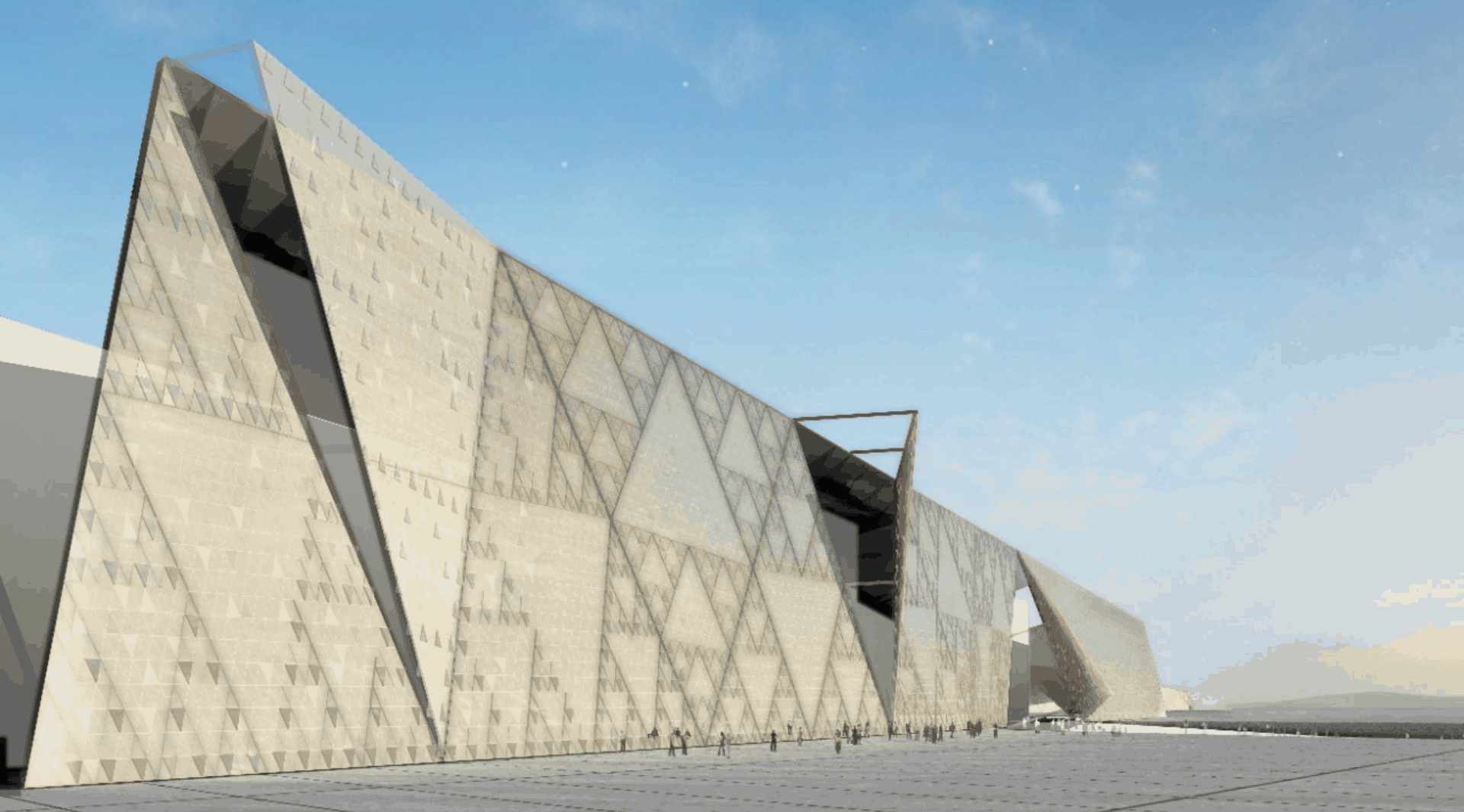
What can we learn from the Tutankhamun collection at the Grand Egyptian Museum?
The Tutankhamun collection at the Grand Egyptian Museum is a treasure trove of insights into the life, death, and afterlife beliefs of the famous boy king and the wider context of the New Kingdom era in which he lived.
One of the most important insights the collection offers is about royal life in ancient Egypt. The sheer quantity and quality of the items found in Tutankhamun’s tomb, from intricately designed jewelry to ceremonial chariots, illustrate the affluence and artistic mastery of the time.
The funerary practices of ancient Egyptians are revealed through items such as the beautifully crafted canopic jars that held the king’s internal organs, the golden mask that adorned his mummy, and the series of nested coffins that protected his body. These artifacts highlight the importance the Egyptians placed on the afterlife and their extensive burial rituals.
Artifacts with religious significance, like statuettes of gods and goddesses and the boy king’s golden throne, help us understand the pantheon of deities worshipped in ancient Egypt and the theological concepts prevalent during Tutankhamun’s reign.
The collection also provides insights into Egypt’s diplomatic relations during the New Kingdom. Several items, like the ebony and ivory game board, are believed to be gifts from foreign lands, indicating the diplomatic ties Egypt had during this period.
Finally, the collection has served to advance scientific knowledge. The ongoing analysis of Tutankhamun’s mummy has yielded valuable information about his health and cause of death, contributing to our understanding of ancient Egyptian medicine and pathology.
In essence, the Tutankhamun collection at the Grand Egyptian Museum paints a vivid picture of life, death, religion, and diplomacy in the New Kingdom era, making it an invaluable resource for understanding this fascinating period of ancient Egyptian history.
How does the Grand Egyptian Museum cater to educational needs and engage younger audiences?
The Grand Egyptian Museum goes beyond displaying artifacts; it actively seeks to educate its visitors, particularly younger audiences, about the rich history and culture of ancient Egypt.
One of the ways the museum achieves this is through its interactive exhibits. By using technology such as touch screens and virtual reality, the museum turns learning into a fun, engaging experience. Children can ‘step into’ a virtual reconstruction of a pyramid or explore a 3D model of a sphinx, providing them with a memorable learning experience that textbooks alone cannot offer.
The museum also offers educational workshops and programs designed for different age groups. These programs often involve hands-on activities, such as creating Egyptian-style art or participating in mock archaeological digs. These activities allow children to learn by doing, which can enhance their understanding and retention of the information.
The Grand Egyptian Museum also hosts a children’s museum, a dedicated space where children can explore exhibits designed at their eye level and participate in interactive games and activities related to ancient Egyptian life.
The museum’s efforts to educate don’t stop at its doors. Its online platform offers a wealth of educational resources, including high-resolution images of artifacts, detailed information about various exhibits, and virtual tours, making it a valuable tool for students and educators alike.
Lastly, the museum actively collaborates with schools and educational institutions, offering special programs and guided tours tailored to the educational curriculum. This collaboration ensures that a visit to the museum complements and enhances students’ classroom learning.
In conclusion, through its engaging exhibits, educational programs, and collaborations, the Grand Egyptian Museum plays a crucial role in educating the younger generation about Egypt’s rich cultural heritage, ensuring its preservation for future generations.

How can visitors best plan their visit to the Grand Egyptian Museum to make the most of their experience?
Planning your visit to the Grand Egyptian Museum can significantly enhance your experience and ensure you don’t miss any of its spectacular exhibits. Here are some steps to help you prepare for your visit:
Firstly, familiarize yourself with the layout of the museum. The museum’s exhibits are organized chronologically, making it easier for visitors to understand the progression of Egypt’s history. You may want to check the museum map online to get an idea of the layout.
Secondly, decide on the exhibits you most want to see. With over 100,000 artifacts, it may not be possible to view everything in one visit. The Tutankhamun collection, the royal mummies, and the larger-than-life statues are among the must-see exhibits.
The museum offers several guided tours that can enrich your visit. These tours are led by knowledgeable guides who provide in-depth information about the artifacts and their historical context. Consider booking a tour that aligns with your interests.
Check the museum’s schedule for any special events or workshops during your visit. The museum regularly hosts educational programs, lectures, and special exhibitions that can enhance your experience.
Remember to download the museum’s mobile app. This tool offers audio guides, interactive maps, and additional information about the exhibits. It also allows you to plan your visit, book tickets, and stay updated on upcoming events and workshops.
Lastly, plan for rest breaks during your visit. The museum’s expansive size can be overwhelming, so it’s essential to take breaks. The museum houses several cafes and a restaurant where visitors can rest and enjoy a meal.
In conclusion, planning your visit can help you make the most of your experience at the Grand Egyptian Museum. With some preparation, you can ensure a visit that is both enjoyable and informative.
What facilities and services does the Grand Egyptian Museum offer to ensure accessibility for all visitors?
The Grand Egyptian Museum is committed to making its collections accessible to all visitors, including those with disabilities. To this end, it offers a range of facilities and services designed to facilitate an enjoyable and inclusive experience.
For visitors with mobility impairments, the museum provides wheelchair-accessible entrances, elevators, and restrooms. It also offers free wheelchair rental services for those who need them.
Visitors with visual impairments can benefit from the museum’s tactile paths and Braille labels. These features allow them to navigate the museum and access information about the exhibits independently.
The museum also offers guided tours in sign language for visitors with hearing impairments. These tours ensure that deaf and hard-of-hearing visitors can fully engage with and enjoy the museum’s exhibits.
For visitors with cognitive disabilities, the museum offers easy-to-read guides and interactive displays. These tools help to simplify complex information and provide an engaging, hands-on learning experience.
The museum’s commitment to accessibility extends to its educational programs and workshops, which are designed to be inclusive and adaptable to the needs of individuals with different abilities.
Finally, the museum ensures the comfort of all its visitors by providing a range of general amenities, including a restaurant, cafes, a bookshop, and a children’s museum.
In conclusion, the Grand Egyptian Museum’s extensive accessibility features and services demonstrate its commitment to inclusivity and its mission to make Egypt’s rich cultural heritage accessible to all.
| Day | Opening Hours |
|---|---|
| Monday | 9 a.m. to 6 p.m. |
| Tuesday | 9 a.m. to 6 p.m. |
| Wednesday | 9 a.m. to 6 p.m. |
| Thursday | 9 a.m. to 6 p.m. |
| Friday | 9 a.m. to 6 p.m. |
| Saturday | 9 a.m. to 6 p.m. |
| Sunday | 9 a.m. to 6 p.m. |
Are there any future plans for the Grand Egyptian Museum?
As a modern institution, the Grand Egyptian Museum is always evolving and looking forward. While its current offerings are indeed vast, plans are underway to continually expand and update its exhibits, programs, and facilities.
One of the key future plans involves the further integration of technology into the museum experience. The museum intends to leverage advancements in virtual and augmented reality, digital mapping, and other technologies to create more interactive and immersive exhibits.
Moreover, the museum is dedicated to broadening its reach through digital platforms. This includes expanding its online collection, developing interactive online resources, and creating virtual tours to bring the museum to those who cannot visit in person.
Education and community engagement also remain at the forefront of the museum’s plans. It intends to expand its range of educational programs, workshops, and events, targeting different age groups and demographics.
Additionally, the museum is continually working on its conservation and research initiatives. This includes the ongoing study and preservation of artifacts, as well as collaboration with international institutions on research and conservation projects.
What are the visiting hours and ticket prices for the Grand Egyptian Museum?
Visiting hours and ticket prices for the Grand Egyptian Museum can vary and are regularly updated to accommodate changes in visitor flow and special events. Therefore, it is advisable to check the official website or contact the museum directly for the most accurate and up-to-date information.
Typically, the museum is open seven days a week, with extended hours on certain days. There may also be special hours for certain exhibits or events, so visitors are encouraged to check in advance.
Ticket prices vary depending on various factors such as the visitor’s age, nationality, and the type of access (general admission or special exhibits). Discounts are typically offered for students, seniors, and groups. In addition, children under a certain age and persons with disabilities may be eligible for free admission.
To conclude, a visit to the Grand Egyptian Museum offers a unique journey into Egypt’s rich cultural heritage. From its vast collection of artifacts to its innovative use of technology and inclusive educational programs, the museum truly represents a bridge from the era of pyramids to modern cities. As such, it remains a must-visit destination for anyone interested in history, culture, or simply the story of human civilization.
| Questions | Summary |
|---|---|
| What makes the Grand Egyptian Museum unique? | Largest archaeological museum, houses over 100,000 artifacts, includes complete Tutankhamun collection, offers chronological walkthrough of Egypt's history, hosts educational programs and workshops. |
| How does the Grand Egyptian Museum enhance our understanding of the Pyramids of Giza? | Exhibits from the Pyramid Age, artifacts from the Giza plateau, showcases religious significance of pyramids, offers a glimpse into royal burial practices, uses modern technology for interactive learning. |
| What role does the Grand Egyptian Museum play in the preservation and conservation of Egyptian artifacts? | Equipped with state-of-the-art conservation labs, uses a proactive approach to preservation, educates public about preservation, collaborates globally on conservation projects. |
| How does the design and architecture of the Grand Egyptian Museum reflect the transition from ancient pyramids to modern cities? | Blends traditional and contemporary styles, uses modern technology, layout embodies transition from ancient to modern times, includes green spaces and accessibility features. |
| What are some notable exhibits in the Grand Egyptian Museum? | Tutankhamun collection, artifacts from workers' village at Deir el-Medina, collection of papyri, funerary artifacts, artistic masterpieces. |
| How has the Grand Egyptian Museum used modern technology to enhance the visitor experience? | Advanced lighting systems, interactive displays, virtual reality experiences, augmented reality guides, mobile app, online platform. |
| What can we learn from the Tutankhamun collection at the Grand Egyptian Museum? | Insights about royal life, funerary practices, religious significance, diplomatic relations, advances scientific knowledge. |
| How does the Grand Egyptian Museum cater to educational needs and engage younger audiences? | Interactive exhibits, educational workshops and programs, children's museum, online platform, collaborates with schools and educational institutions. |
| How can visitors best plan their visit to the Grand Egyptian Museum? | Familiarize with the museum layout, decide on must-see exhibits, consider guided tours, check for special events, use museum's mobile app. |
| What facilities and services does the Grand Egyptian Museum offer to ensure accessibility for all visitors? | Wheelchair-accessible entrances, elevators, and restrooms, tactile paths, Braille labels, sign language tours, easy-to-read guides and interactive displays. |

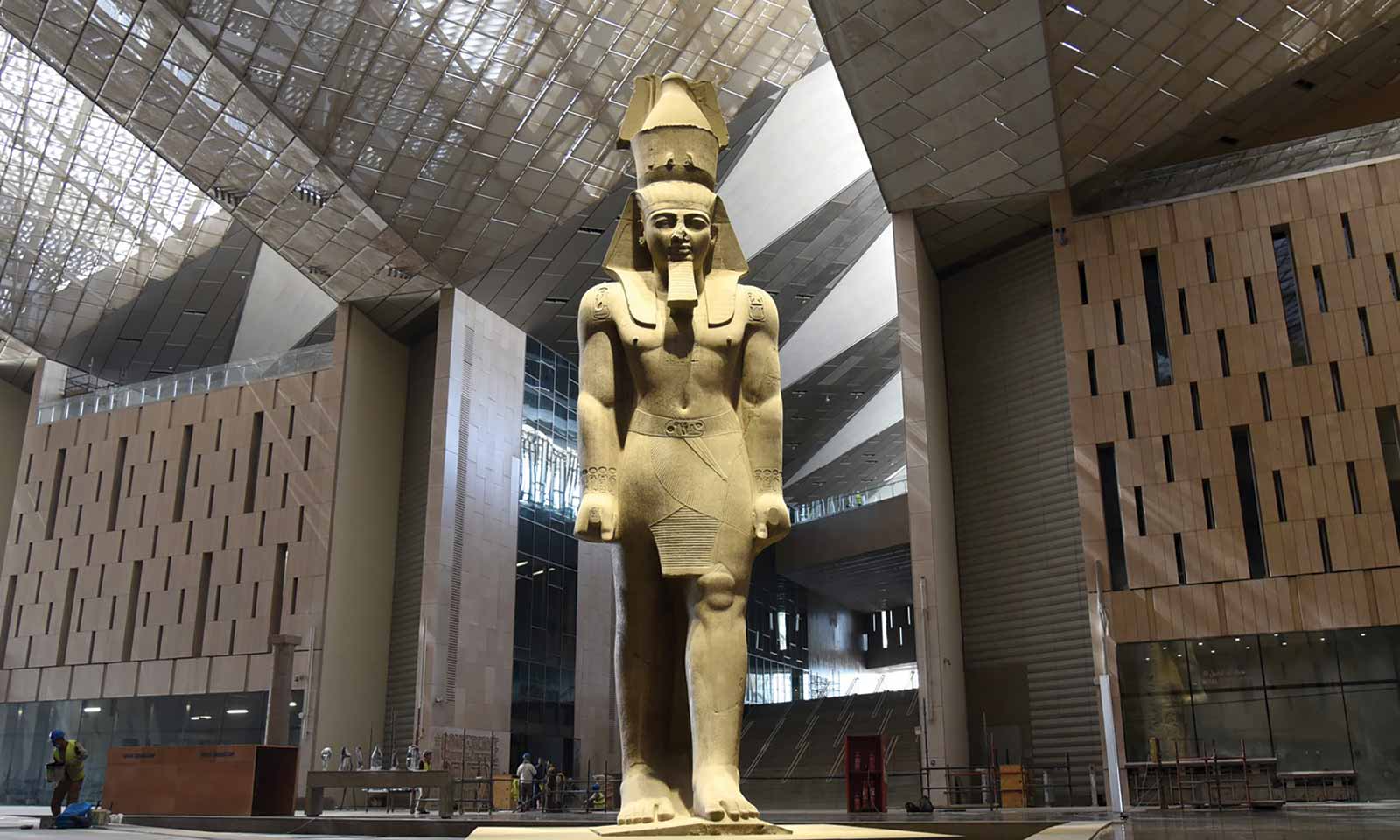

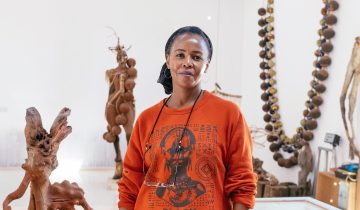
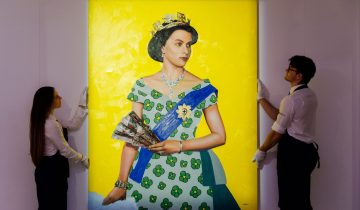
 No products in the basket.
No products in the basket.